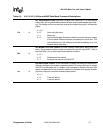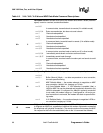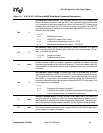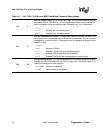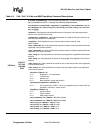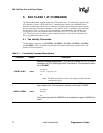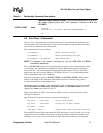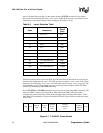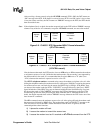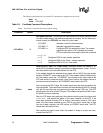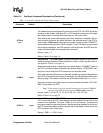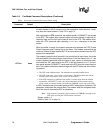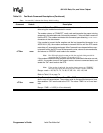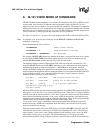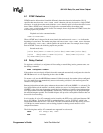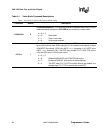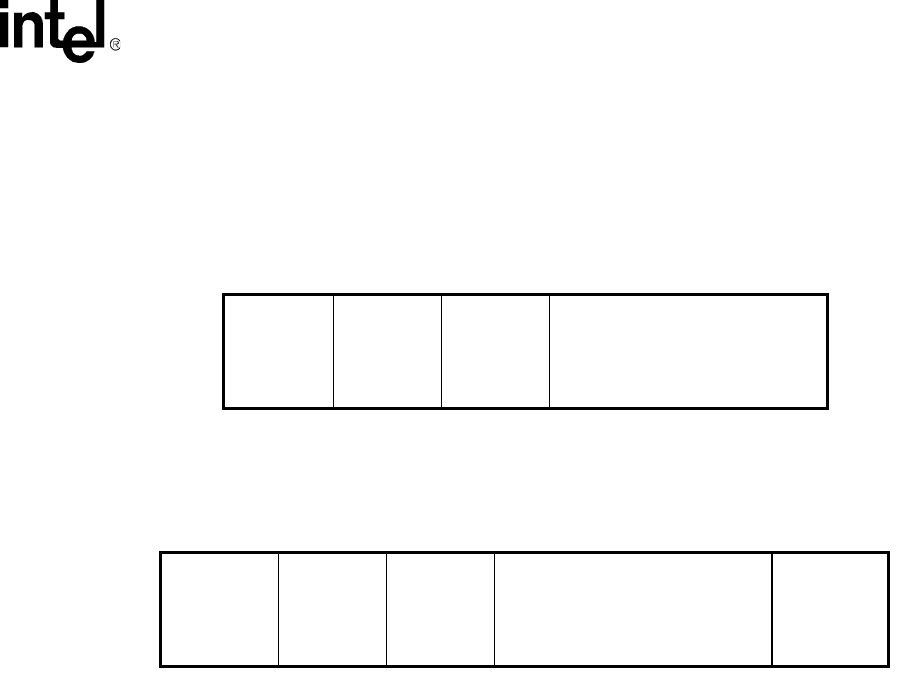
56K V.92 Data, Fax, and Voice Chipset
Programmer’s Guide Intel Confidential 75
After receiving a frame correctly using the AT+FRH command (FCS is OK), the DCE returns an
“OK” message to the DTE. If the frame is received in error (FCS is not OK, carrier is lost, or data
is lost due to data overflow), the DCE returns an “ERROR” message to the DTE; the DTE should
then discard the frame.
Note: If the telephone line is on-hook, the modem responds back to the DTE with an ‘ERROR’ message
whenever any of the fax AT commands, except the +FCLASS command, are sent to the modem.
Figure 5-2. CLASS 1 DTE-Generated HDLC Frame Information
(AT+FTH=<mod>)
Figure 5-3. CLASS 1 DTE Reception of HDLC Frame Information
(AT+FRH=<mod>)
Like the data modem mode, the DTE needs to issue an ATD string or ATA command to the modem
to originate or answer a fax call. Unlike the data modem mode, auto-answering is not supported by
the modem while in fax mode. It is recommended that S-register S0 be set to “0” (that is, use
‘ATA’) whenever the modem is expected to receive a fax call.
The ATDT <telephone number> command string causes the modem to originate a fax call. After
dialing the telephone number, the modem sends out a calling tone (1100 Hz), recognizes the remote
fax modem answer tone, and looks for the remote fax HDLC flags at 300 bps. If the HDLC flags
are detected, the modem sends the DTE a “CONNECT” message followed by the Class 1 HDLC
frame information. If the HDLC flags are not detected within the time limit defined by S-register
S7, the modem sends a “NO CARRIER” message to the DTE and then hangs up the line. If the
modem hangs up the line while processing the ATD command (that is, while the modem is on-
hook), the modem responds back with an “ERROR” message whenever the DTE issues one of the
data stream AT commands.
The ATA command causes the modem to answer a fax call. After going off-hook, the modem sends
the answer tone followed by HDLC flags. The modem then sends a “CONNECT” message to the
DTE and waits to receive the HDLC frame information from the DTE. In general, the ATA
command performs three functions:
1) It places the modem off-hook.
2) It causes the modem to transmit the answer tone.
3) It causes the modem to act as if it received an AT+FTH=3 command from the DTE.
Address Control
Facsimile
Control
Facsimile
Information
FieldField
Field Field
Address Control
Facsimile
Control
Facsimile
Information
FieldField
Field Field
Frame
Checking
Sequence
(FCS)



